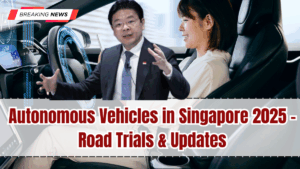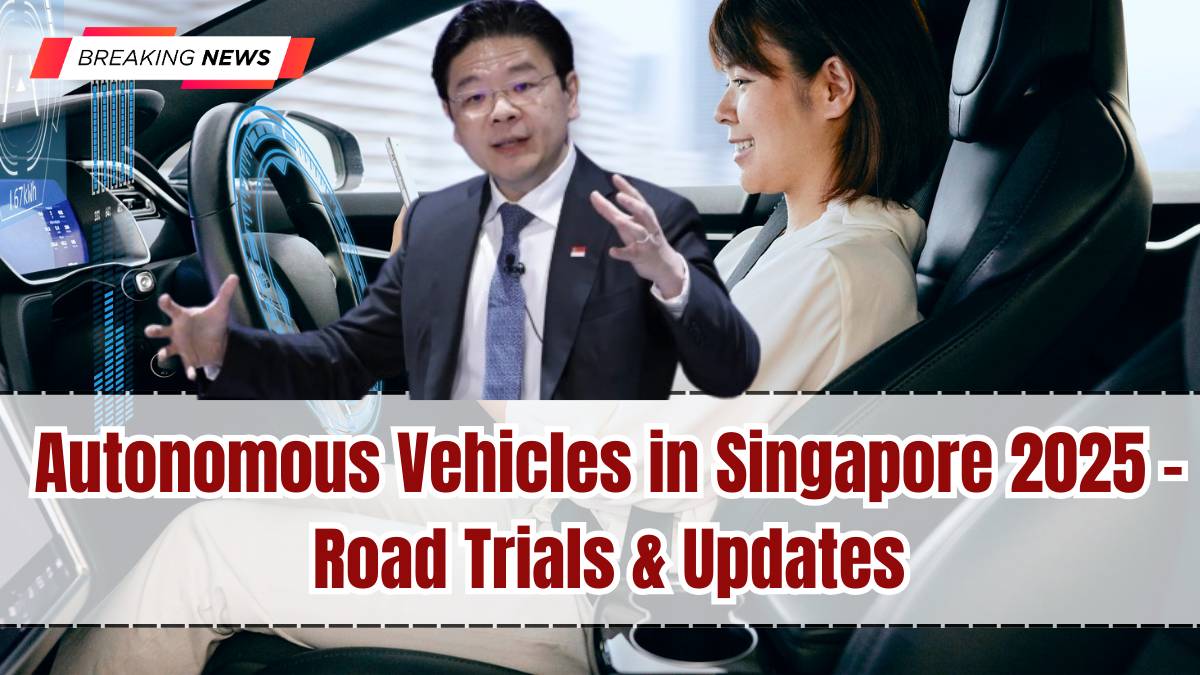The Autonomous Vehicles Singapore 2025 program is entering an exciting new phase. Singapore, long seen as a global leader in smart transport, has expanded road trials for driverless cars across several districts this year.
From shuttles in residential areas to pilot fleets in business zones, autonomous vehicles (AVs) are gradually becoming part of everyday life. The 2025 updates highlight more routes, tighter safety measures, and stronger partnerships with tech companies.

Why Singapore is Investing in AVs
Singapore’s small size and advanced infrastructure make it a perfect testbed for AVs.
The government sees autonomous technology as a solution to:
-
Reduce traffic congestion.
-
Improve transport safety by minimizing human error.
-
Support aging populations with more mobility options.
-
Enhance sustainability by integrating AVs with electric technology.
These long-term goals explain why the Land Transport Authority (LTA) has been steadily expanding AV trials since 2016.
Road Trials Expanded in 2025
In September 2025, Singapore officially added three new AV trial zones to its network.
-
Jurong Lake District: Focus on driverless buses and first-mile, last-mile transport for commuters.
-
Punggol Digital District: Testing shuttles integrated with smart traffic systems.
-
Changi Business Park: Autonomous taxis trialed for office workers and short commutes.
These areas join existing trial zones in One-North and Sentosa, creating the most extensive AV testing network in Southeast Asia.
Types of Autonomous Vehicles on Trial
The vehicles being tested in 2025 include:
-
Driverless Shuttles: Small buses designed for residential estates and business parks.
-
Autonomous Taxis: Tested under controlled conditions, these could one day operate like Grab or Gojek without drivers.
-
Delivery Robots: Smaller AVs designed for last-mile delivery of parcels and food.
-
Public Service Vehicles: AVs supporting community mobility for elderly and disabled citizens.
This diversity reflects Singapore’s aim to deploy AVs in multiple sectors, not just private car ownership.
Safety Measures Strengthened
Public safety remains the government’s top priority. In 2025, new rules were introduced for AV operators:
-
Every vehicle must have a safety driver or operator on standby during trials.
-
Enhanced geo-fencing technology ensures AVs stay within approved areas.
-
Remote monitoring systems track vehicles in real time, allowing operators to intervene when needed.
-
Data sharing with LTA is mandatory, helping refine regulations.
These measures aim to build public trust and prevent incidents as trials expand.
Partnerships Driving Innovation
Singapore continues to attract international companies to collaborate on AV projects.
-
Motional and Hyundai: Testing autonomous taxis at Changi.
-
Grab and Toyota: Running shuttle trials in residential neighborhoods.
-
Local Start-ups: Singapore-based firms are working on software and mapping solutions to improve navigation.
The government’s open approach has made Singapore a hub for AV research and development in Asia.
Public Response to AVs in 2025
Residents in trial districts have reported mixed reactions. Many commuters appreciate the convenience of free shuttle services, while some remain cautious about safety.
Public education campaigns, including demonstrations at the Singapore Auto Show 2025, have helped build confidence. Passengers who try AV shuttles often report positive experiences, noting smooth rides and modern design.
Economic and Social Impact
The AV trials are not just about technology—they’re also about preparing Singapore’s workforce and society.
-
Job Creation: Engineers, safety operators, and data analysts are in demand.
-
Reskilling Programs: Traditional drivers are being offered retraining opportunities for future AV-related jobs.
-
Accessibility: Elderly citizens in pilot zones gain new mobility options with on-demand AV shuttles.
These changes align with Singapore’s broader Smart Nation initiative.
Challenges That Remain
Despite progress, challenges remain before AVs can go mainstream.
-
High Costs: Developing and deploying AVs is expensive.
-
Public Trust: Safety concerns still linger, especially after global AV incidents.
-
Traffic Integration: AVs must learn to interact smoothly with human-driven vehicles.
-
Regulation: Clearer laws are needed for liability and insurance in case of accidents.
The government is addressing these step by step, but full-scale deployment is still years away.
Looking Ahead
By 2030, Singapore aims to introduce autonomous public transport in select districts. The 2025 expansion of trials is a major step toward this goal.
Industry insiders believe AV taxis could become common within the next decade, starting with business districts and airports. If successful, Singapore may serve as a model for other nations exploring AV technology.
Conclusion
The Autonomous Vehicles Singapore 2025 program shows how far the country has come in building a driverless future. With expanded trial zones, strong safety protocols, and growing public engagement, AVs are closer than ever to mainstream adoption.
While challenges remain, the combination of government support and private innovation ensures that Singapore will stay at the forefront of autonomous transport in Asia.
FAQs
Where are AV trials happening in 2025?
Jurong Lake District, Punggol Digital District, Changi Business Park, One-North, and Sentosa.
What types of AVs are being tested?
Driverless shuttles, autonomous taxis, delivery robots, and community mobility vehicles.
Are AVs safe to ride in Singapore?
Yes. Trials include safety drivers, geo-fencing, and real-time monitoring to ensure safety.
Which companies are involved in the trials?
Global firms like Motional, Hyundai, Toyota, and Grab, alongside local start-ups.
When will autonomous vehicles be widely available in Singapore?
Full-scale rollout is expected closer to 2030, starting with public transport routes and business districts.
Click here to know more.
